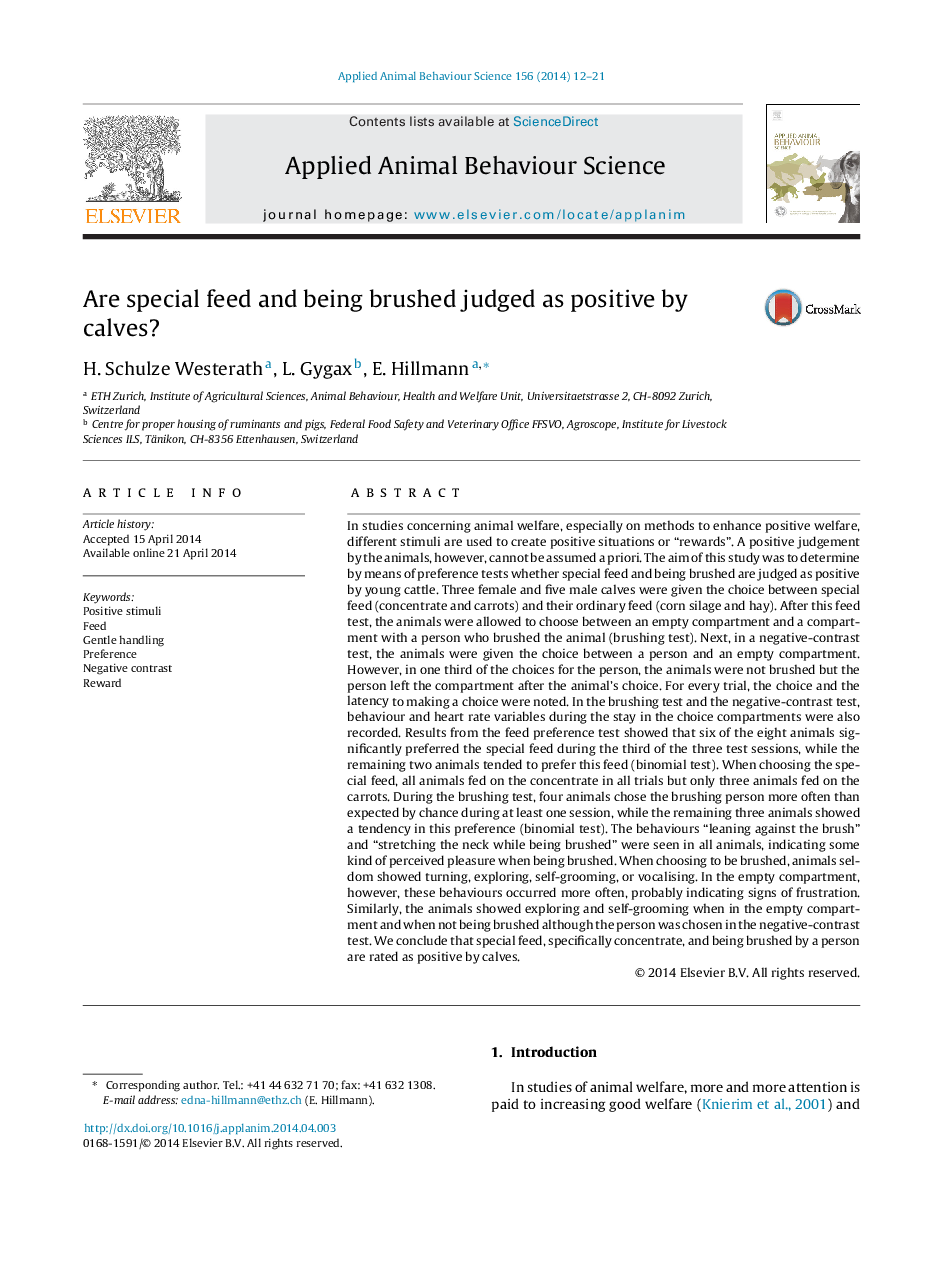| Article ID | Journal | Published Year | Pages | File Type |
|---|---|---|---|---|
| 4522547 | Applied Animal Behaviour Science | 2014 | 10 Pages |
•We aimed at determining whether special feed and being brushed are judged as positive by calves.•Behaviour and heart rate parameters in preference tests and a negative-contrast test were examined.•Special feed, specifically concentrate, and being brushed by a person are rated as positive.
In studies concerning animal welfare, especially on methods to enhance positive welfare, different stimuli are used to create positive situations or “rewards”. A positive judgement by the animals, however, cannot be assumed a priori. The aim of this study was to determine by means of preference tests whether special feed and being brushed are judged as positive by young cattle. Three female and five male calves were given the choice between special feed (concentrate and carrots) and their ordinary feed (corn silage and hay). After this feed test, the animals were allowed to choose between an empty compartment and a compartment with a person who brushed the animal (brushing test). Next, in a negative-contrast test, the animals were given the choice between a person and an empty compartment. However, in one third of the choices for the person, the animals were not brushed but the person left the compartment after the animal's choice. For every trial, the choice and the latency to making a choice were noted. In the brushing test and the negative-contrast test, behaviour and heart rate variables during the stay in the choice compartments were also recorded. Results from the feed preference test showed that six of the eight animals significantly preferred the special feed during the third of the three test sessions, while the remaining two animals tended to prefer this feed (binomial test). When choosing the special feed, all animals fed on the concentrate in all trials but only three animals fed on the carrots. During the brushing test, four animals chose the brushing person more often than expected by chance during at least one session, while the remaining three animals showed a tendency in this preference (binomial test). The behaviours “leaning against the brush” and “stretching the neck while being brushed” were seen in all animals, indicating some kind of perceived pleasure when being brushed. When choosing to be brushed, animals seldom showed turning, exploring, self-grooming, or vocalising. In the empty compartment, however, these behaviours occurred more often, probably indicating signs of frustration. Similarly, the animals showed exploring and self-grooming when in the empty compartment and when not being brushed although the person was chosen in the negative-contrast test. We conclude that special feed, specifically concentrate, and being brushed by a person are rated as positive by calves.
